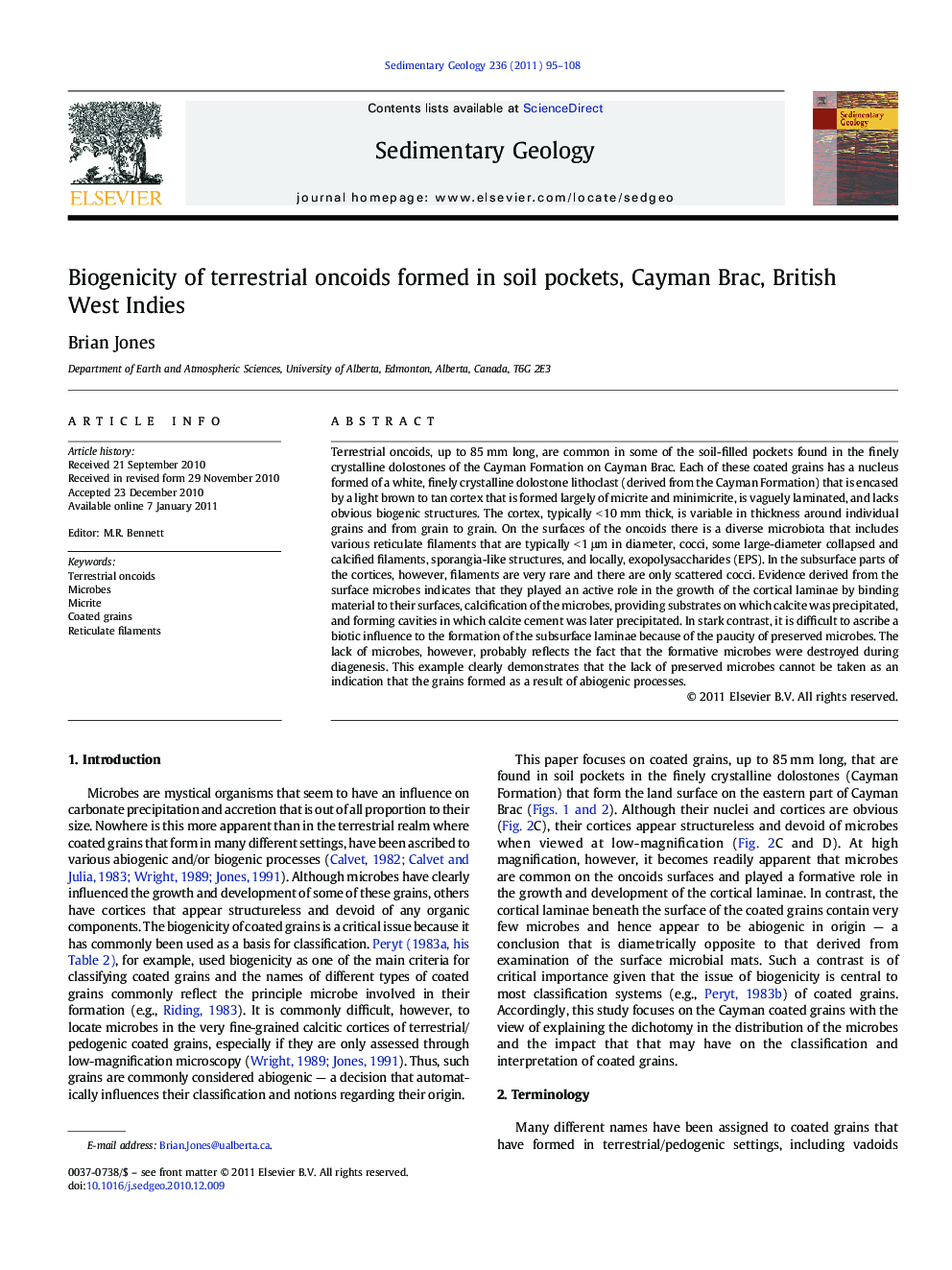| Article ID | Journal | Published Year | Pages | File Type |
|---|---|---|---|---|
| 4690130 | Sedimentary Geology | 2011 | 14 Pages |
Terrestrial oncoids, up to 85 mm long, are common in some of the soil-filled pockets found in the finely crystalline dolostones of the Cayman Formation on Cayman Brac. Each of these coated grains has a nucleus formed of a white, finely crystalline dolostone lithoclast (derived from the Cayman Formation) that is encased by a light brown to tan cortex that is formed largely of micrite and minimicrite, is vaguely laminated, and lacks obvious biogenic structures. The cortex, typically < 10 mm thick, is variable in thickness around individual grains and from grain to grain. On the surfaces of the oncoids there is a diverse microbiota that includes various reticulate filaments that are typically < 1 μm in diameter, cocci, some large-diameter collapsed and calcified filaments, sporangia-like structures, and locally, exopolysaccharides (EPS). In the subsurface parts of the cortices, however, filaments are very rare and there are only scattered cocci. Evidence derived from the surface microbes indicates that they played an active role in the growth of the cortical laminae by binding material to their surfaces, calcification of the microbes, providing substrates on which calcite was precipitated, and forming cavities in which calcite cement was later precipitated. In stark contrast, it is difficult to ascribe a biotic influence to the formation of the subsurface laminae because of the paucity of preserved microbes. The lack of microbes, however, probably reflects the fact that the formative microbes were destroyed during diagenesis. This example clearly demonstrates that the lack of preserved microbes cannot be taken as an indication that the grains formed as a result of abiogenic processes.
